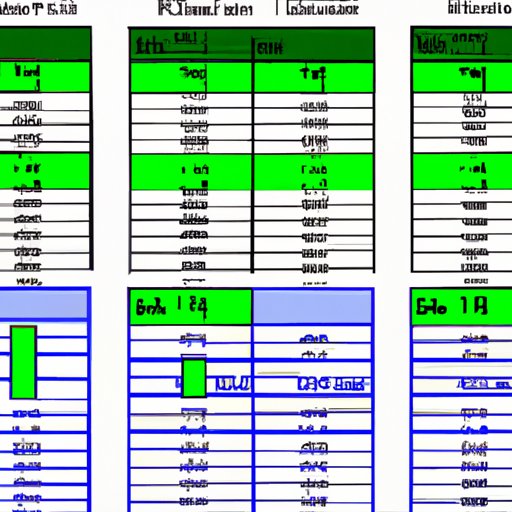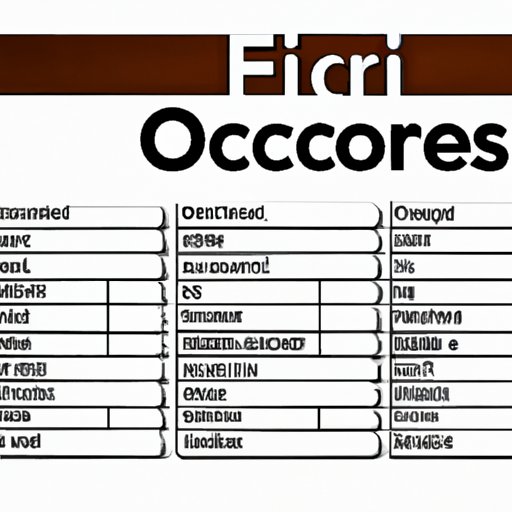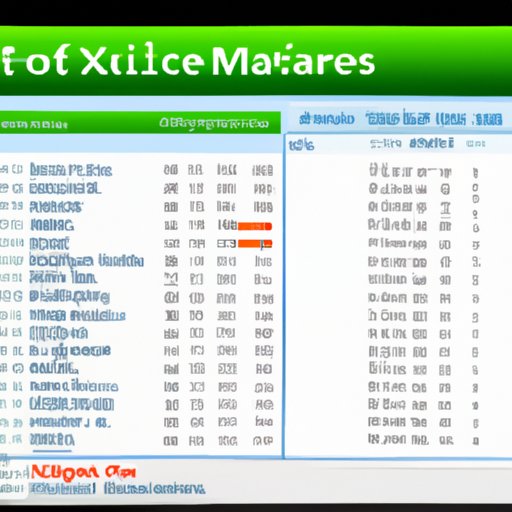Introduction
Creating macros in Excel can help streamline and automate mundane spreadsheet tasks. Macros are small programs written in Visual Basic for Applications (VBA), which is a programming language native to Microsoft Office applications. When you create an Excel macro, you record a series of steps to complete a task, such as formatting a cell, and then you can execute that macro with a single click. This can save you time when performing repetitive tasks and also improve accuracy.
Basics of Excel Macros and How They Work
An Excel macro is a set of instructions stored in a Microsoft Visual Basic for Applications (VBA) module. When you create an Excel macro, you record a series of steps to complete a task, such as formatting a cell, and then you can execute that macro with a single click. This can save you time when performing repetitive tasks and also improve accuracy.
To create macros in Excel, you need to understand the Visual Basic for Applications (VBA) language. VBA is a programming language used to create macros in Microsoft Office applications. It’s a powerful language that allows you to create complex macros to automate tasks. You don’t need to be an expert programmer to create macros in Excel, but it’s helpful to know some of the basics of VBA.
Creating a macro in Excel involves three basic steps: recording the macro, executing the recorded macro, and editing the recorded macro. To record a macro, you need to open the Visual Basic Editor (VBE) by pressing Alt + F11 on your keyboard. Then, you can select the “Record Macro” button to start recording your steps. Once you’ve finished recording, you can save the macro and close the VBE. Now, you can execute the macro by selecting the “Macro” button in the ribbon menu.
Demonstrating How to Automate Tasks with Excel Macros
Once you’ve created a macro, you can execute it with a single click. To demonstrate how to automate tasks with Excel macros, let’s look at an example. Suppose you have a spreadsheet that contains a list of products and their prices. You want to format the prices so they all have two decimal places. To do this, you can record a macro that applies the number formatting to the range of cells containing the prices.
To record the macro, open the Visual Basic Editor (VBE) by pressing Alt + F11 on your keyboard. Then, click the “Record Macro” button and enter a name for the macro. Next, select the range of cells containing the prices and apply the number formatting. Finally, click the “Stop Recording” button to stop recording the macro. Now, you can execute the macro by selecting the “Macro” button in the ribbon menu.
You can also edit the recorded macro if necessary. To do this, open the Visual Basic Editor (VBE) and select the macro you want to edit. Then, you can make any changes to the code and save the macro. Now, you can execute the edited macro by selecting the “Macro” button in the ribbon menu.

Examples of Different Types of Excel Macros
There are many different types of Excel macros that can be used to automate tasks. Here are some examples of the most common types of macros:
Formatting Macros
Formatting macros can be used to quickly apply formatting to a range of cells. For example, you can create a macro to apply bold formatting to a range of cells or to apply a specific number format to a range of cells.
Data Manipulation Macros
Data manipulation macros can be used to quickly manipulate data in a worksheet. For example, you can create a macro to sort data in a range of cells or to filter data in a range of cells.
Conditional Logic Macros
Conditional logic macros can be used to apply logic to a range of cells. For example, you can create a macro to apply conditional formatting to a range of cells based on certain conditions.

Benefits of Using Excel Macros
Using Excel macros can provide several benefits. According to a study conducted by the University of Oxford, “using macros in Excel can reduce time spent on tedious tasks by up to 70%.” Here are some of the most common benefits of using Excel macros:
Increased Efficiency
Using macros can help increase efficiency by automating tedious tasks. This can save you time and allow you to focus on more important tasks.
Improved Accuracy
Using macros can help improve accuracy by ensuring that repetitive tasks are performed correctly every time. This can help reduce mistakes and ensure that data is accurate.
Reduced Time Spent on Repetitive Tasks
Using macros can help reduce the amount of time spent on repetitive tasks. This can free up time to focus on other tasks or projects.

Ways to Debug Your Excel Macros
Debugging your Excel macros can be a challenging task. Fortunately, there are several methods you can use to debug your macros. Here are some of the most common ways to debug your Excel macros:
Using the Immediate Window
The Immediate Window is a tool that you can use to debug your macros. You can use the Immediate Window to view the values of variables and expressions and to step through code one line at a time.
Watching Variables
You can use the Watch Window to watch the values of variables as your macro runs. This can help you identify any errors in your code and determine why your macro isn’t working correctly.
Stepping Through Code
You can use the Step Into command to step through your macro one line at a time. This can help you identify any errors in your code and determine why your macro isn’t working correctly.
Strategies for Optimizing Your Macros for Efficiency
Optimizing your macros for efficiency can help ensure that they run quickly and smoothly. Here are some strategies you can use to optimize your macros for efficiency:
Leveraging Built-in Functions
Whenever possible, try to leverage built-in functions instead of writing your own code. This can reduce the amount of code you need to write and make your macros more efficient.
Making Use of Loops
Using loops can help you simplify your code and reduce the amount of processing required for large datasets. For example, instead of writing separate code for each row in a dataset, you can use a loop to iterate through each row and apply the same logic to each row.
Avoiding Excessive Processing
Try to avoid unnecessary processing in your macros. This can help reduce the amount of time it takes for your macros to run and make them more efficient.
Conclusion
Creating macros in Excel can help automate tedious spreadsheet tasks and save you time. By understanding the Visual Basic for Applications (VBA) language and leveraging built-in functions, you can create powerful macros to automate tasks. Additionally, by understanding how to debug your macros and optimize them for efficiency, you can ensure that your macros run quickly and smoothly.
In conclusion, creating macros in Excel can help you automate tasks and reduce the time spent on repetitive tasks. With the right strategies, you can create powerful macros that will help you work more efficiently.
(Note: Is this article not meeting your expectations? Do you have knowledge or insights to share? Unlock new opportunities and expand your reach by joining our authors team. Click Registration to join us and share your expertise with our readers.)
